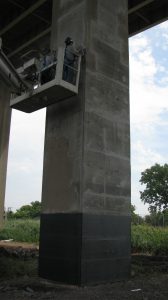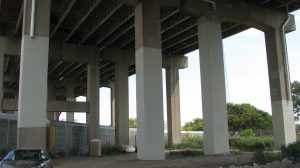June 20, 2019 1:00 pm
Matthew Chynoweth, P.E., Chief Bridge Engineer, Director of the Bureau of Bridges and Structures, Michigan Department of Transportation; Steve Kahl, P.E., Bridge Construction and Modeling Engineer, MDOT; and Jason DeRuyver, P.E., Bridge Design Squad Leader,
Webinar Documents:
Michigan DOT’s Use of Externally-Bonded FRP Systems for Bridge Element Strengthening - pdf of presentation
Q&A Session - pdf
MDOT Special Provision for Column Wrapping with Fiber Reinforced Polymer (FRP) Sheets [01-14-10] - pdf
FRP Confinement Calculator - pdf
Mathcad – Pier Strengthening - pdf
News - June 20, 2019 - pdf of presentation
Description: The Michigan Department of Transportation (MDOT) has used externally-bonded fiber-reinforced polymer (FRP) systems for many purposes, including additional shear and flexural capacity for prestressed concrete beams and, more actively, in providing confinement and flexural capacity of tall and complete concrete piers. This presentation will cover two unique applications. The first application is a single concrete pier supporting a transverse steel integral floor beam, as part of a fixed, continuous interchange ramp. The fixity of the large knuckle bearing and the curved ramp configuration created cracking and spalling stresses. An externally-bonded FRP system was used to strengthen and confine the pier. The second application was on very tall piers supporting the largest bridge in Michigan, I-75 over the Rouge River. The piers contain slag aggregate, which is known to have low fracture toughness. An externally-bonded FRP system was used to strengthen and confine many large piers as an asset management strategy to keep the bridge serviceable. MDOT recently replaced the bridge deck at a cost of $100 million, and actively manages the over 200 piers with externally-bonded FRP systems.
Presentation Photos/Graphics:





